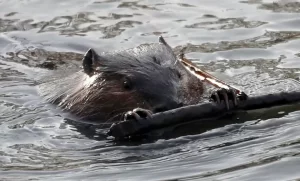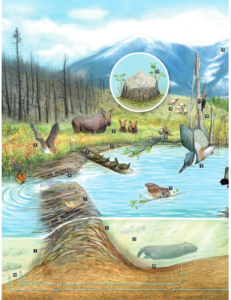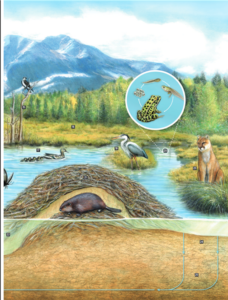Here’s hoping everyone had good cheer and there aren’t to many things to clean up day. I got really excited when I saw this headline this morning, I love a good “suing USDA story”. But looks can be deceiving. Remember that.
The Minnesota paper company is suing the government over the removal of the beaver dam
 A paper company in northern Minnesota is suing the federal government over a botched beaver dam removal that flooded two streets and a campground, leaving a lake clogged with debris.
A paper company in northern Minnesota is suing the federal government over a botched beaver dam removal that flooded two streets and a campground, leaving a lake clogged with debris.
Blandin Paper Co., which owns 180,000 acres of forest in seven counties, which in 2019 contracted with the U.S. Department of Agriculture to manage beaver dams on its Itasca County land near Lake Pokegama.
But two USDA employees blew up a dam on the company’s property without first digging another beaver dam downstream on the same creek, an action that caused a water cascade that eventually brought the paper company under control of the Minnesota Department of Natural Resources for complaint .
Sigh. I do love a story about USDA being sued, but not this one. They aren’t suing USDA for blowing up beaver dams. They’re suing them for not blowing up ENOUGH beaver dams. Because you gotta blow them all up at the right time.
Grrrr.
Blandin also claims that it appealed directly to the USDA to recover costs of repairing damage caused by the flood, but was denied. The company’s lawsuit was filed in federal court on Dec. 14. Blandin declined to comment through a lawyer.
According to the agency’s website, she provides technical and direct assistance to farmers and foresters dealing with beavers, noting that an analysis of her work found that “for every dollar spent dealing with beaver damage, $20.93 dollars were saved”.
But in the case of Blandin’s dam removal, the company said in its complaint that the total cost of repairing the damage and paying inspection fees to the DNR was $817,902.30.
After the two USDA contractors blew up the first dam, a second one downstream was overwhelmed, causing “a tremendous torrent of water and sediment,” according to the lawsuit. Water poured downstream onto the creek bed, uprooting trees and boulders, clogging the culvert under Sugar Hills Road and then washing over that road and Sherry’s Arm Road beyond. The water inundated private property and parts of Fishing Springs Campground, eventually depositing dirt, rocks and debris on 19,000 square feet of Pokegama Lake.
The DNR later ordered Blandin to repair the damage to the unnamed creek and lake, which are public waters. A document provided by the DNR showed 14 sites where Blandin was responsible for stabilizing riverbanks, fortifying flood plains and repairing the waterway’s original flow. The company eventually removed around 1,100 cubic meters of soil from the lake.
Gee I wonder how important having enough water is to a paper company? You would think that they would want to save as much of it as possible, wouldn’t you? But I guess they didn’t think about the water-savers before them hired hitmen to kill their families. Why should they?
Under an agreement between Blandin and USDA, the federal agency was responsible for obtaining permits for the dam removal work. But the DNR later told the company that no one had obtained the necessary permit to alter public waters.
Blandin commissioned the USDA to reduce beaver damage by removing the animals from their land by either trapping or shooting, and removing their dams with either explosives or hand rakes. But Blandin claims the two USDA employees were negligent in not investigating how the first blast they set off would affect the rest of the site.
However, the company has completed its restoration work. According to the lawsuit, in October 2021, the DNR determined that the repairs were adequate.
We hired you to shoot the beavers not flood the road! Sure we could have kept the beavers and the water and their dams and all that wildlife and nitrogen removal, but we’re our name is “Blandni”
How visionary do you expect us to be?





















































